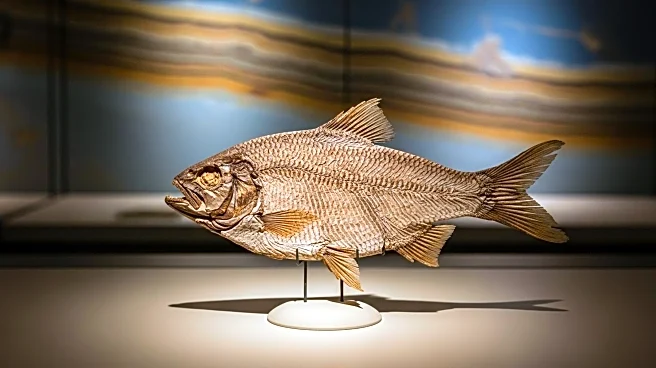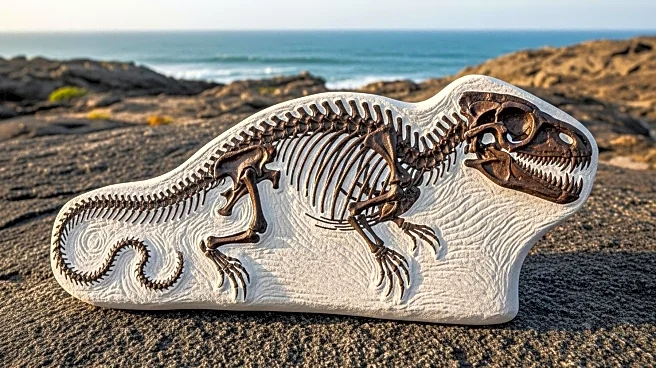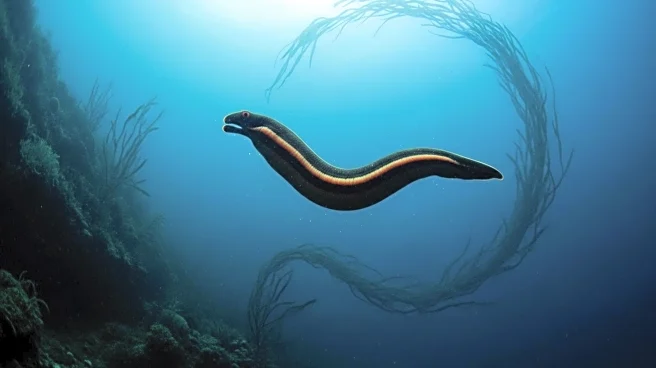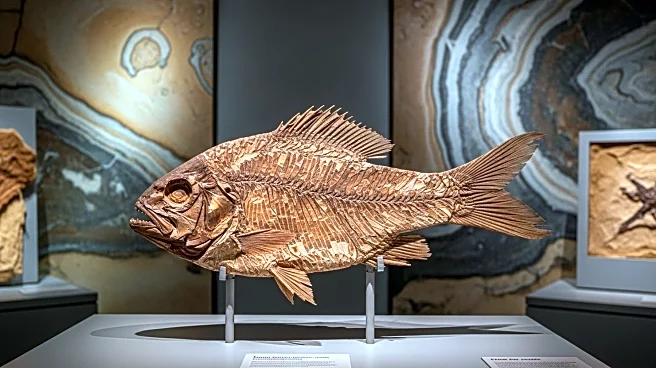What is the story about?
What's Happening?
Researchers at the University of Western Ontario, in collaboration with the Royal Tyrrell Museum of Palaeontology and international partners, have discovered a fossil of a tiny fish in southwestern Alberta. This specimen, named Acronichthys maccognoi, dates back to the Late Cretaceous period, providing new insights into the origin and evolution of otophysans—a supergroup of fish that includes catfish, carp, and tetras. The fossil, approximately 4 cm long, is the oldest North American member of this group, offering valuable data on the early evolution of freshwater fish. The study, published in the journal Science, highlights the unique characteristics of otophysans, particularly their modified vertebrae that transmit vibrations to the ear from the swim bladder, functioning similarly to a human ear. Advanced imaging techniques, such as micro-CT scans, were employed to study the fossil without damaging it.
Why It's Important?
The discovery of Acronichthys maccognoi is significant as it fills a gap in the fossil record of otophysans, providing crucial data on the transition from marine to freshwater species. This transition is believed to have occurred at least twice during the evolution of otophysans, with the divergence estimated around 154 million years ago. Understanding this evolutionary process is vital for comprehending the origins of many freshwater fish species that dominate rivers and lakes globally. The research not only enhances knowledge of prehistoric freshwater fish diversity but also offers insights into the broader evolutionary patterns of aquatic life.
What's Next?
Researchers aim to further investigate how Acronichthys and its ancestors transitioned from marine to freshwater environments, despite the inability to swim across saltwater oceans. This involves exploring the movement of these species across continents, as their freshwater descendants are now found on every continent except Antarctica. Continued studies at fossil sites in Canada may provide additional keys to understanding the origins and evolution of groups that are prevalent in today's aquatic ecosystems.
Beyond the Headlines
The discovery underscores the importance of using advanced imaging technologies like micro-CT scans in paleontology. These non-destructive methods allow for detailed examination of fragile fossils, preserving them for future research. The study also highlights the collaborative efforts between institutions and international researchers, emphasizing the global nature of scientific exploration and discovery.
AI Generated Content
Do you find this article useful?














